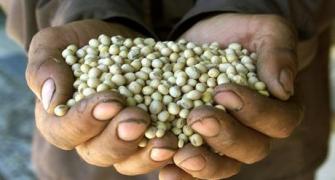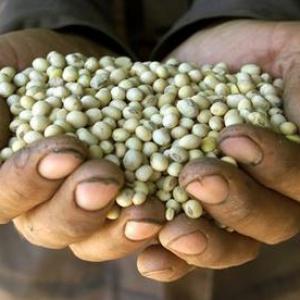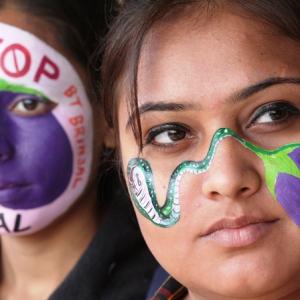India is capable of developing GM crops, Randy Hautea, global coordinator for International Service for the Acquisition of Agri-Biotech Applications, tells Kanika Datta.

This year marks the 20th anniversary of the commercial adoption of genetically modified crops, a period in which steady growth has been accompanied by persistent controversies over its health and environmental impact.
In an email interview with Kanika Datta, Randy Hautea, global coordinator for International Service for the Acquisition of Agri-Biotech Applications, the GM crop advocacy group founded by Norman Borlaug, answers some of the charges. Edited excerpts:
One of the claims by supporters of biotech/GM crops is that it can solve malnutrition problems in developing countries. Though developing countries are among the major adopters of GM crops, there is no firm evidence to support this claim. So how is this assertion being made?
The first generation biotech crops occupied 179.6 million hectares in 2015 and delivered broad-based agronomic, economic, social and environmental benefits in the last two decades since they were first commercially planted on a wide scale in 1996. Additionally, it is estimated that farmers in up to 28 countries have reaped more than $150 billion in benefits from biotech crops since 1996. Most of these additional benefits accrued to 16.5 million small farmers and their families totalling about 65 million people, who are some of the poorest people in the world.
India is a major beneficiary of genetically improved Bt [Bacillus thuringiensis] cotton commercially introduced in 2002. Bt cotton delivered benefits at both macro and micro levels. India is now the world’s largest producer of cotton, and produces a quarter of the world’s cotton. About 7.7 million small-holder cotton farmers adopted Bt cotton over 95 per cent of total cotton area, and have continued to plant it season after season, which by itself is convincing testimony of the farm-level success of Bt cotton.
In the last 13 years, cotton farmers in India gained an additional farm income of $18.3 billion, which is one of the best yardsticks to measure the performance of Bt cotton technology in the hands of Indian farmers. Access to adequate, diverse, nutritious and safe food is largely a function of family income, and improved incomes of farm families as a result of biotech crops most certainly contribute to household food security.
Opponents of GM crops say such foods are causing a rise in food allergies. How valid is this?
In two decades of wide-scale planting of biotech crops and consumption of biotech crop products, the technology has yielded positive results wherever it was approved for commercial cultivation and/or consumption irrespective of the country (developing or industrial countries) or the people. There isn’t a verifiable report on the alleged ill-effects of GM crops and products.
The regulatory oversight of GM crops by stakeholders has made this technology rigorously and thoroughly tested and closely monitored. There is no scientific evidence to suggest any link to food allergies caused by biotech crops. On the contrary, there are plenty of examples showing substantial reduction in mycotoxins in biotech corn, which is now planted in over 53.6 million hectares in 17 countries.
It is also said that GM technologies encourage the kind of monoculture that could eventually make these crops vulnerable to pests and disease and could lead to the creation of superbugs. Indeed, there is an example of Bollgard II, developed by Monsanto’s Indian subsidiary, which cotton farmers complain is less effective against the pink bollworm but is more expensive. How do you explain this?
GM technology imparts new traits to existing crop varieties such as insect resistance, herbicide tolerance and/or drought tolerance, and hence doesn’t create a new system of agriculture. Bt and herbicide tolerant (HT) traits have dominated the global biotech crops acreages since their inception in 1996. Regulatory compliance and stewardship are a must to prolong the life of Bt/HT technology.
In the case of India, Bt cotton technology continues to be effective against its major pest Helicoverpa armigera. However, in some areas, we have received reports of pink bollworm developing resistance to Bt cotton. It is paramount for the country to continue with effective stewardship, introduce new generation and multiple-mode insect resistance Bt cotton, and strictly implement refuge management practices.
Detractors of GM technologies say oversight and regulatory mechanisms in most adopter countries are too weak or prey to lobbying by the multinational seed tech developers to protect consumers against the possible dangers of GM crops. This is one of the major arguments why countries should be wary of adopting such technologies. In India, for example, the introduction of a host of GM crops -- brinjal, tomato and so on -- have been kept in abeyance on grounds that the science and safety are yet to be established.
On the basis of two decades of wide-scale global use of GM crops and products, we completely disagree with this view. Biotech crops are one of the most rigorously tested products. Multiple regulatory agencies are involved in risk assessment of biotech crops. Each deregulated biotech event undergoes a close scientific scrutiny, safety assessment and field-testing in a rigorously designed bio-safety programme, which not only meets the demanding standards of international protocols but also satisfies the safety requirements of each country’s bio-safety regulatory framework.
It is said that the continuing and long-standing controversies over GM crops is really a case of business rivalry between GM seed companies and pesticide manufacturers (for whom greater GM use diminishes the demand for their product). Also, how do you explain the fact that 20 years after the commercial adopting of GM crops, the technology is open to such fierce controversy worldwide?
We believe the controversies over GM crops are beyond the mere assumption or contrived rivalry between GM seed companies and pesticide manufacturers. Biotech crops complement crop protection tools to produce better and healthy crops. In 2015, the global market value of biotech crops is estimated at $15.3 billion, that represents 20 per cent of the $76.2-billion global crop protection market in 2014, and 34 per cent of the $45-billion global commercial seed market. What would be interesting to look at instead is the role of the organic crops industry in the so-called continuing controversies.
The danger of monopolies (and therefore future misuse) among suppliers of GM technologies is also large. For instance, in India, although several technologies have been licensed, Monsanto holds considerably more than half the market share. Would you agree?
One of the noticeable trends in 20 years of commercial cultivation of GM crops is the rapid development of home-grown GM crops by public sector institutions and local private seed companies, particularly in developing countries. Remarkable numbers of home-grown GM crops are either deregulated or are at the advanced stage of regulatory approvals in Brazil and Argentina in South America; India and China in Asia and South Africa in the African continent.
In addition, we have also seen tremendous progress on public-private partnerships (PPP) between multinationals and public sector institutions in developing countries to field-test globally deregulated biotech events for the benefits of small-holder farmers. Major PPP projects include Bt brinjal, Bt chickpea, LBR (late blight resistant) potato, GM mustard and Bt cotton in India; drought tolerant sugar cane in Indonesia; Bt brinjal, LBR potato, Bt cotton and Golden rice in Bangladesh; drought tolerant maize in Africa; IR (infra-red reflectance)/HT soybean in Argentina and HT soybean and VR beans in Brazil.
This feat of promoting home-grown GM crops through PPP is effective in developing and delivering GM crops to farmers, and this could not be achieved without strong government support and political will. The scientific community in India is capable of developing GM crops that are relevant to India, and the PPP mechanism is an ideal proposition to overcome the danger of monopolies, provided the government of India recognises and facilitates PPP to achieve the desirable outcome in agriculture.
Image: File photograph of a protest against GM crops in New Delhi. Photograph: Adnan Abidi/Reuters.










